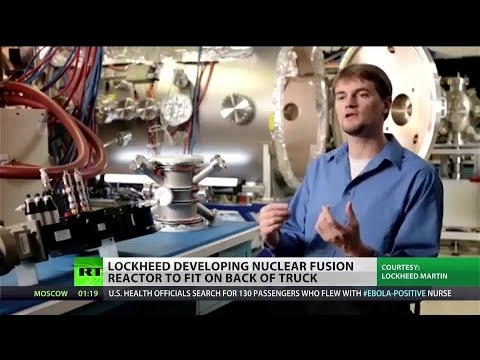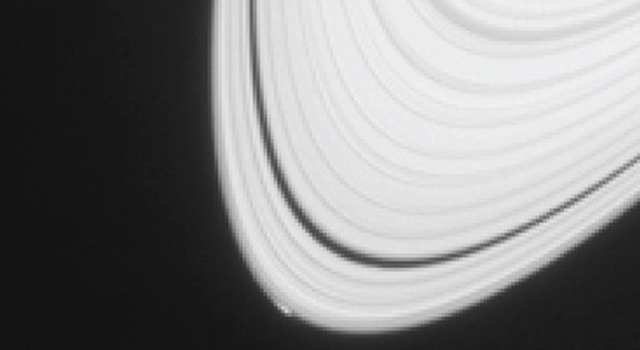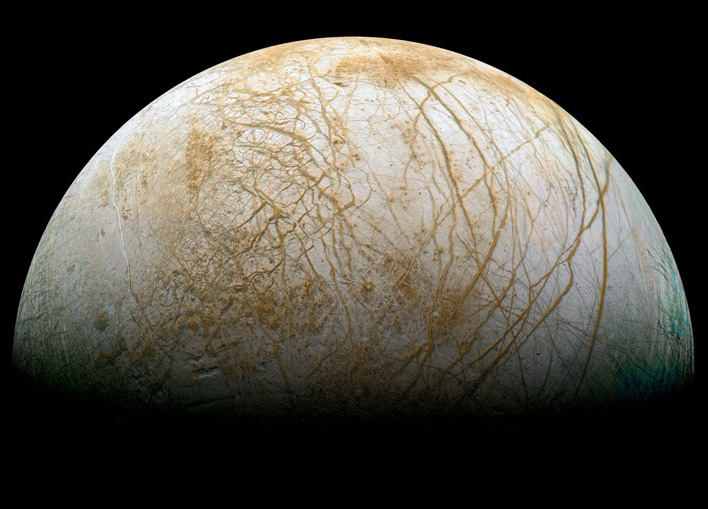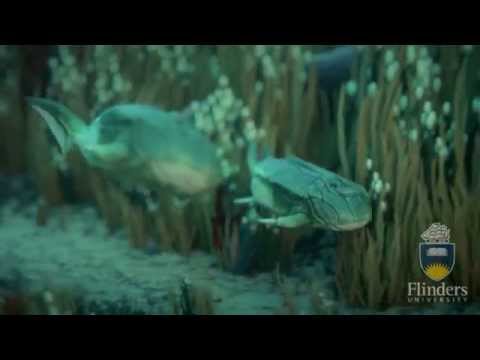10Teenagers Make Agricultural Breakthrough
The Google Science Fair is a yearly online competition open to teenagers aged 13–18 that has taken place since 2011. Like the name suggests, it is sponsored by Google, as well as organizations like Virgin Intergalactic, National Geographic, and Lego. In 2014, the grand prize was awarded to three 16-year-old girls from Ireland for their project: “Natural Bacteria Combating World Hunger.” In brief, the three students showed that certain crops can grow faster if they are treated with certain diazotroph bacteria. There was already a symbiotic link established between the bacteria in question and legumes, with the bacteria and plants thriving together. The students decided to see what the effect would be on non-legume plants, especially during the germination stage. For their experiment the students used the Rhizobium bacterium, which is quite common in soil, and common cereal crops like barley and oats. The results were significant. During germination, seeds treated with the bacteria sprouted 50 percent faster than untreated ones. This caused the harvest yield to improve by as much as 70 percent. The teenagers suggested that the process could be a relatively effective and inexpensive way to increase crop yields. They plan to continue their project with support from the European Commission.
9Lockheed Martin Announces Nuclear Fusion Breakthrough
Of course, just because a story makes big headlines doesn’t mean the science behind it is guaranteed to be revolutionary. In fact, ever since technology developer Lockheed Martin boasted of a huge breakthrough in the field of nuclear fusion earlier this year, experts have been expressing severe doubts about the claims. Even so, the announcement generated a lot of publicity and certainly made the headlines. In October, Lockheed Martin announced that the company had taken a step closer to developing fusion-powered reactors small enough to fit inside the back of a truck. Astonishingly, the company claimed that such a reactor could be ready for use in as little as 10 years. The proposed reactor is the result of four years of work by Lockheed’s most secretive branch, Skunk Works, which specializes in fusion energy. According to Lockheed Martin, the first prototype 100-megawatt reactor will be ready in just five years. Sadly, many scientists now view Lockheed’s claims as akin more to a publicity stunt than an actual breakthrough. It’s not necessarily that they are unfeasible, but the press release issued by Lockheed is all flash and no substance, talking grandly of peace and a new atomic age without any real science to back it up. Fusion energy experts note that key pieces of information, such as the temperature and confinement time theoretically possible in the reactor, are missing. Until Lockheed releases additional data, it’s probably a good idea to take the headlines with a grain of salt.
8Saturn’s New Moon
According to NASA, it would appear that Saturn is the proud owner of a new baby moon, adorably named “Peggy.” New images taken by the Cassini spacecraft show a disturbance in the outer edge of Saturn’s iconic ring system—the result of the gravitational effect of an object within the ring itself. Despite the fact that the object in question forms a gravitational arc 1,200 kilometers (750 mi) long and 10 kilometers (6 mi) wide, scientists don’t expect the moon to be bigger than 1 kilometers (0.6 mi) in diameter. We will have to wait until the end of 2016, when the Cassini probe will move closer to the outer edge of Saturn’s ring, in order to take a closer look at Peggy. Excitingly, we are likely watching the birth of a new moon. Peggy is most likely at the stage where it has accrued enough icy mass to pull away from the ring system and begin orbiting Saturn. It is the first time we will have the opportunity to see a moon during the formation process and will likely help us further understand how Saturn’s other moons have formed.
7Giant Dinosaur Discovered
When it comes to dinosaurs, size definitely does matter. It’s a key part of the fascination we have with them—dinosaurs reached such amazing sizes that no other land animal has even come close to matching them. And 2014 was the year we might just have discovered the biggest of them all. It can be pretty tough to accurately determine the weight and size of a creature that lived millions of years ago from just a few bones. And that is a major problem for many species—only a few bones are found and not necessarily the ones needed for accurate measurements. Which is part of what makes last year’s discovery in Argentina so astounding—almost half the skeleton was recovered, including two-thirds of the skull. Named Dreadnoughtus due to its humongous size, the dinosaur forms part of the Titanosaur group, reserved only for the true giants. For a while, Dreadnoughtus was thought certain to be the largest dinosaur in existence. It weighed around 65 tons, was 12 meters (40 ft) tall, and was 26 meters (85 ft) long. But Dreadnoughtus does have a challenger—Argentinosaurus has long been considered the biggest of the dinosaurs and many estimates still place him at the top. However, Argentinosaurus is only known from a few bones, so it’s impossible to say for sure which one was the true king of the giants. But there might be one more piece of evidence that could prove crucial—bone evidence suggests that the recovered Dreadnoughtus fossil was still growing at the time of death.
6An Earth-Like Planet In A Habitable Zone
Discovering life on another planet is the Holy Grail of cosmology. Since we only know for sure of life on our own planet, astronomers are on the lookout for exoplanets that resemble Earth as much as possible, hoping that similar conditions mean a similar potential for life (as we know it). To be considered Earth-like, an exoplanet must meet a few basic criteria: It should be roughly the same size Earth and should be located in the habitable zone of its system—the area where temperatures allow for liquid water to exist. However, planets are smaller and dimmer than stars, making them much harder to spot. The majority of discovered exoplanets are found using transit photometry—when a planet passes in front of a star, the star’s brightness decreases by a small amount. Another successful method is radial velocity—orbiting planets actually have a minute gravitational effect on the stars themselves, causing them to travel in a small orbit. The trouble is that both of these methods work best with giants like Jupiter, not Earth-like exoplanets. But last year we finally discovered the first genuine Earth-like planet in the habitable zone. The planet is called Kepler-186f and it orbits Kepler-186, a red dwarf 500 light-years from Earth. The exoplanet is only 10 percent larger than Earth and orbits its star every 130 days. Four other planets orbit the same star at a much closer distance, making them too hot for recognizable life to develop. The discovery proved that planets similar to Earth are not only possible, but likely a common occurrence throughout the Universe.
5New Stem Cell Class Discovered
There are few scientific topics that generate more controversy than stem cell research. This is usually the result of using embryonic stem cells. Many question the ethical implications involved, but we should also remember that new and improved methods for harvesting and even creating stem cells are constantly being researched. Furthermore, here are just a few of the medical conditions that stem cells could be useful in treating: cancer, Alzheimer’s, Parkinson’s, diabetes, ALS, brain tumors, infertility, heart disease, lung damage, multiple sclerosis, and the list goes on. Of course, all of that controversy would likely go away if we could just stop using embryonic stem cells—which is why it briefly appeared as if 2014 would be the year that changed everything. It looked like a major breakthrough had taken place when a new process called “stimulus-triggered acquisition of pluripotency” (STAP) was announced. It was supposed to be a revolutionary new way of creating stem cells by bathing blood cells in a low pH acid bath for 30 minutes. Unfortunately, it later turned out that the results were fraudulent. But just when it looked like 2014 would be a black eye for stem cell research, a group of scientists from Canada discovered a new class of stem cells, dubbed F-class for their fuzzy appearance. The discovery is very recent and its full ramifications are not yet clear, but it is expected that the new type of stem cells will prove safer and more efficient for medical use.
4Plate Tectonics On Europa
Jupiter’s moon Europa has long been considered a prime candidate for the existence of extraterrestrial life, mostly due to the presence of liquid water under the moon’s icy shell. But this year another significant element was discovered—tectonic plates. New evidence suggests that Europa has a system of plate tectonics similar to our own planet, making it the only other celestial body confirmed to feature this kind of geological activity. The distinctive cracks and ridges that cover Europa make it relatively easy to observe the moon’s surface and the potential existence of plate tectonics there has been debated among astronomers and geologists for quite a while now. Images of Europa taken using the Galileo orbiter in the early 2000s appeared to show the moon’s ice crust expanding. While nobody thought that the moon was growing, we weren’t really sure where the terrain was going. However, last year new evidence suggested that Europa’s surface plates moved below one another and into the moon’s 30-kilometer (20 mi) thick ice shell. The existence of such a geological mechanism would allow material from the surface to move into Europa’s interior oceans and vice versa, further increasing the moon’s potential as a habitable world.
3A Million Mummies Discovered
Just a few weeks ago, it looked like we would be closing 2014 with one of the biggest archaeological finds of all time after news broke of a cemetery uncovered in Egypt containing approximately one million mummies. The mummies themselves were supposed to be anywhere between 1,500 and 2,000 years old, dating back to when the Roman and Byzantine Empires controlled Egypt. The discovery had been made by archaeologists from Utah’s Brigham Young University and the cemetery was later dubbed Fag el-Gamous (“Way of the Water Buffalo”) after a nearby road. But while the announcement generated excited headlines around the world, many experts treated the claims skeptically. For starters, it wasn’t clear where such a large number of bodies could have come from—there is only one known large historical settlement in the area, and it has its own burial grounds. And it didn’t take long for the highly publicized claim to be rebuffed. Representatives from the Egyptian Antiquities Ministry were quick to decrease the number of “mummies” from millions to a few thousand. They also pointed out that the bodies weren’t real mummies by any meaningful definition of the word—they were just old remains buried in a cemetery. It’s still not clear if the outrageous “million mummies” story was a giant error or a deliberate attempt to garner extra publicity, but in the meantime the archaeologists involved have all had their dig licenses revoked by the Egyptian government. Just another reason why you shouldn’t automatically trust the latest viral headline.
2The First Species To Have Sex
It would appear that a team led by Australian paleontologist John Long has uncovered the origin of sex as a means of reproduction—and it’s in Scotland. They point to a newly discovered species of ancient fish called Microbachius dicki, which had apparently mastered sexual reproduction over 380 million years ago. But early sex was apparently a little different from our streamlined modern model—3-D printed models of the fish suggest that the only viable position in which sex would have been possible was sideways. The male had two L-shaped claspers that were inserted into the female’s genital plates and locked in place for the duration of copulation. To help the male stay in position, the female’s genital plates were apparently rough “like Velcro.” If our understanding of animal evolution is correct, it would appear that fish didn’t really take to sex and soon reverted back to spawning as a means of procreation. According to current fossil records, it would be a few million years before sex would make a comeback.
1Our First Landing On A Comet
In March 2004, the Rosetta spacecraft was launched by the European Space Agency, with its main mission being to study comets. During the next 10 years, Rosetta did a flyby of Mars, traveled through the asteroid belt, and performed several other flybys around asteroids. Then, on November 12, the spacecraft’s Philae lander made history by performing the first ever landing on a comet. The comet in question, designated 67P but also known as Churyumov-Gerasimenko, was discovered 45 years ago and is roughly 4 kilometers (2.5 mi) in width and length. It orbits the Sun every 6.5 years and will reach the next perihelion (closest point to the Sun—1.2 astronomical units in this case) in August 2015. The Rosetta spacecraft will remain in orbit around the comet all through 2015 in the hope of providing us with information about the formation of Earth. Comets are considered to contain important ingredients for creating habitable planets, such as water and organic compounds. In fact, one of the hypotheses that Philae will look to solve is whether our planet’s water was actually delivered to us by comets. It will take a while for the lander to provide us with accurate information, but already Philae has been able to detect organic molecules in the atmosphere of the comet. Radu is a history/science buff with an encyclopedic knowledge of The Simpsons and not much else. He also tweets.
























